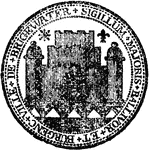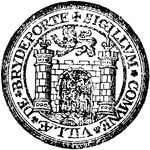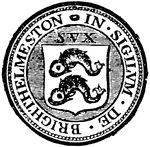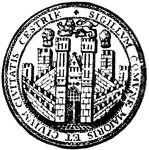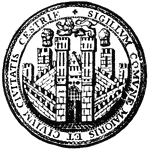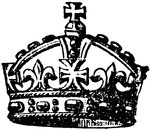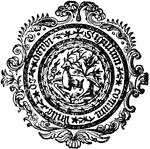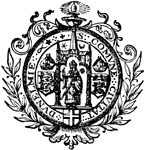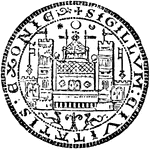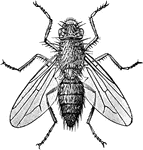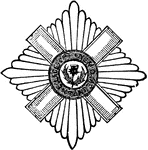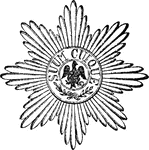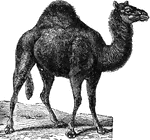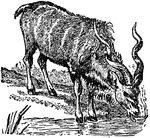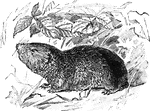
Pine Mouse
A North american meadow mouse. About 4 inches long of a rich dark reddish brown color, with very smooth,…

Passenger Depot
Passenger Depot of the Chicago and North-Western Railroad, corner of Wells and Kinzie streets.

Bird-Tracks
"Footprints resembling those birds are found on red argillaceous sandstones in the valley of Connecticut…
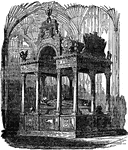
Queen Elizabeth's Tomb
"Queen Elizabeth's Tomb: In the North Aisle of Henry VII's Chapel, Westminster Abbey." — Chambers,…

Piping Plover
A small ring necked plover of North America. It is of a pale gray color above and white below, with…
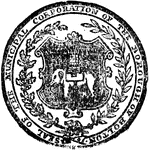
Bolton
The seal representing Bolton or Bolton le Moors, a municipal and parliamentary borough of England.
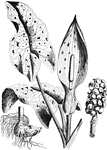
Cuckoo Pint
A common plant of the north temperate Europe. It has purple spotted leaves and can force people to have…
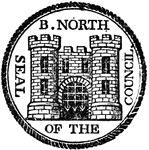
Bridgenorth
The seal of Bridgenorth, a parliamentary and municipal borough and market town of England, in the county…
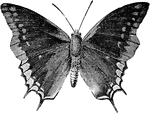
Mourning Cloak
A butterfly native to Eurasia and North America. It has wings that are dark red with a yellow border.
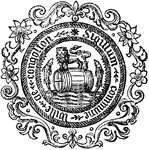
Congleton
"A market-town and municipal borough of England, in the county of Cheshire, near the border of Staffordshire,…
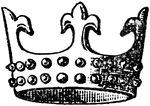
Crown
"Henry I enriched the plain circlet with gems, and on his great seal the trefoils of his fathers crown…

Crown
"Upon his seal as earl of Chester, the same sovereign has the circlet of his open crown heightened with…
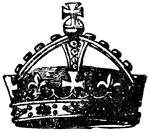
Crown
"The form of the arches shown appear for the first time upon the great seal of Edward VI." — Encyclopedia…
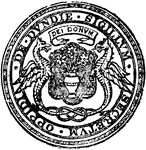
Dundee
"A royal and parliamentary burgh and seaport, situated on the east coast of Scotland, in the county…
Sluice
"One of the simplest forms of sluice as used in river diggings in the north-west of America. A rectangular…
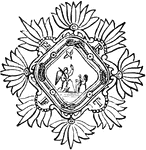
Order of the Annunciation
"The religious Order of the Heavenly Annunciation, or of the Nuns of the Annunciation of Mary, was instituted…
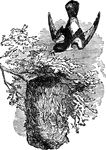
Oriole
"A very beautiful American, bird, found in all parts of the United States, and as far north as 55 degrees…

Rock-Rose
"A genus of exogenous plants, which gives its name to the natural order Cistaceae; an order allied to…
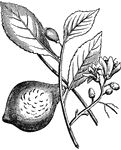
Citron
"A tree cultivated in the south of Europe, and other warm, temperate, or sub-tropical countries for…

Crowberry
"A small procumbent shrub, of the natural order Empetraceae, a native of the northern parts of the world,…
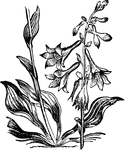
Day-lily
"A genus of plants of the natural order Liliaceae, having a perianth with bell-shaped limb, and sub-cylindrical…
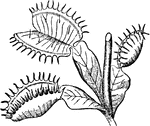
Dionaea
"A very curious and interesting genus of plants of the natural order Droseraceae, having a 5-partite…
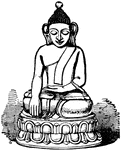
Buddha
"The sacred name of the founder of Buddhism, an Indian sage who appears to have lived in the 5th century…

Amiens Cathedral
"Plan of Amiens Cathedral. A, Apsidal aisle. B B, Outer aisles of choir. F G, Transepts. H, Central…
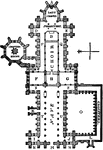
Wells Cathedral
"Plan of Wells Cathedral. A, Apse or apsis. B, Altar, altar-platform, and altar-steps. D E, Eastern…
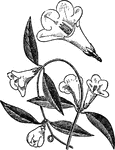
Gelsemium
"The plant known in America as the "Carolina jasmine" is not a true jasmine. other hardy species commonly…
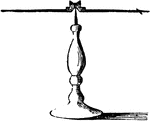
Magnetic Needle
"A bar of steel which is a magnet, suspended in such a way that it can freely turn to the north or south."…
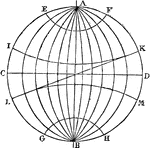
Earth Divisions
"The Earth, whose diameter is 7,912 miles, is represented by the globe, or sphere. The straight line…
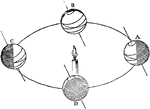
Earth Axis
"Now it is the inclination of the Earth's axis, as above described, which causes the lengths of the…

Earth Axis
"Now it is the inclination of the Earth's axis, as above described, which causes the lengths of the…

Seasons
"Suppose the Earth to be in her Summer solstice, which takes place on the 21st of June. At this period…
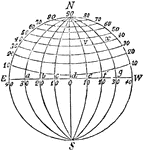
Longitude
"Let this figure represent the Earth, N being the north pole, S the south pole, and E W the equator.…

Lophiomys Imhausi
"This very extraordinary species from north-east Africa differs from all other rodents in the peculiar…

Colombo North-West Breakwater
Breakwaters are structures on coasts as part of coastal defense or to protect an anchorage from the…

Colombo North-West Breakwater
Breakwaters are structures on coasts as part of coastal defense or to protect an anchorage from the…

Sir Walter Raleigh
Raleigh's plan for colonization in Virginia in North America ended in failure at Roanoke Island, but…

Caernarvon Castle
Edward I built many castles in North Wales to help subdue the Welsh Following his conquest of the principality…

Solomon's Seal
Rootstock of Solomon's Seal, with the bottom of the stalk of the season, and the bud for the next year's…

Trillium
Trillium is a genus of about 40-50 species of perennial herbaceous flowering plants, native to temperate…

